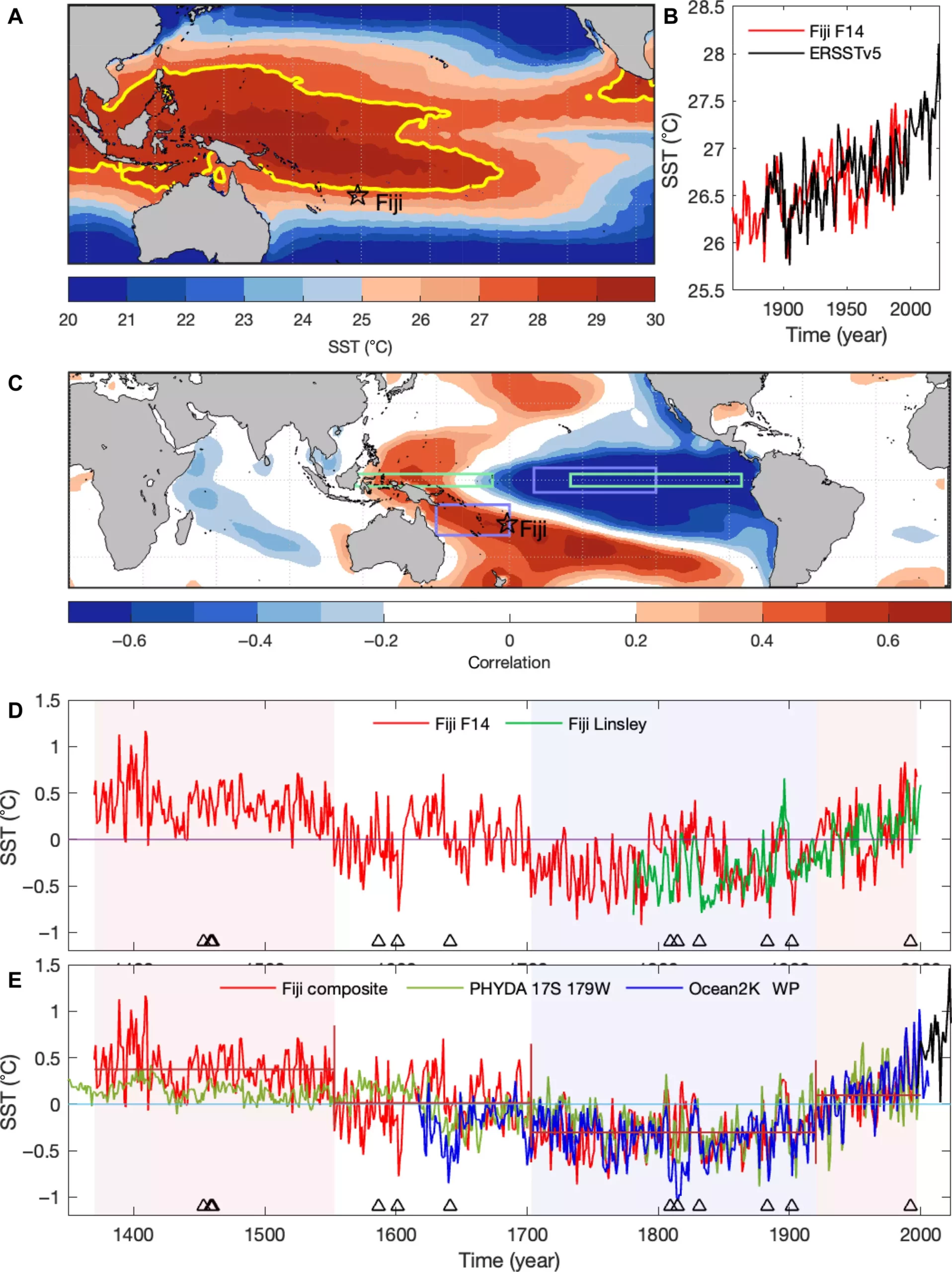A groundbreaking study utilizing a remarkable 627-year record from corals in Fiji has provided unique perspectives on ocean temperature changes and climate variability in the Pacific Ocean since 1370. Published in Science Advances, this research—collaborated upon by an esteemed team of climate scientists including Dr. Ariaan Purich and Professor Matthew England—marks a significant advancement in our understanding of the long-standing interplay between human-induced climate change and natural climatic patterns.
The coral record’s breadth reveals that ocean temperatures were notably warm from 1380 to 1553, reaching levels similar to those observed during the late 20th and early 21st centuries. However, an alarming distinction arises when juxtaposing this historical warming with current trends; the unprecedented spike in ocean temperatures since 1920 is increasingly attributed to human emissions, distinguishing it from the natural variability documented in earlier centuries.
This pioneering research indicates that the current sea surface temperatures represent the highest levels recorded in 653 years. This revelation underscores the urgency for understanding the implications of rising ocean temperatures—especially as they pertain to extreme weather patterns, which have significant ramifications for millions inhabiting the vulnerable Indo-Pacific region.
The correlation between ocean temperatures and coral growth is fundamental; corals serve as natural repositories of historical environmental data, capturing variations over centuries. The methodology employed in analyzing these ancient ecosystems has yielded potent insights, providing the longest continuous reconstruction of sea surface temperature to date.
The findings of this study come on the heels of another recent study released in Nature, which highlighted the alarming state of the Great Barrier Reef, now facing devastating threats due to record-high ocean temperatures. The implications of these research endeavors are stark, prompting an intensified inquiry into the state of marine ecosystems in the context of ongoing climate change.
The research further delves into significant climatic phenomena, employing the Fijian coral record to reconstruct the Interdecadal Pacific Oscillation, which crucially influences climate variability across the Pacific Ocean. This extended reconstruction, nearly doubling the length of previous records, enables scientists to scrutinize the intersection of climate variability and change in unprecedented detail. It reveals a disturbing trend of basin-wide warming in recent times, raising concerns about the stability of climate systems moving forward.
Dr. Ariaan Purich emphasizes the importance of decoding long-term climate variability for accurate future climate predictions. The fresh insights gained from this extensive reconstruction help disentangle the effects of climate change from natural variations, illustrating that the observed Pacific-wide warming is indeed a hallmark of the current climate-change era.
Understanding the ramifications of temperature fluctuations across the Pacific is crucial, particularly as these variations significantly influence regional weather systems. Broad-scale warming can lead to detrimental climate conditions, such as increased aridity in the Coral Sea region, which directly impacts the inhabitants and ecosystems of the fragile Pacific Island nations.
As the study reveals, there are far-reaching implications for future climate scenarios that emphasize the need for global action. The research highlights the necessity for an international commitment to capping global temperature increases to 1.5°C. This can be achieved through a collective shift towards renewable energy sources, the electrification of economies, and a concerted effort to phase out coal and gas.
Overall, this study serves not only as a wake-up call regarding the current state of our oceans but also as a clarion call to the global community. The interwoven narratives of natural history and human impact underscore the urgent need for proactive measures to safeguard our environment. By harnessing the lessons learned from the past, humanity can better confront the challenges of climate change and strive towards a more sustainable future for the planet and its inhabitants.


Leave a Reply